Thrusters Exercise: Technique, Benefits & Common Mistakes
Author:
Unlock your full potential by engaging with our experts and community! Have questions about your fitness journey or looking for expert advice on weightlifting techniques? Don’t hesitate — leave a comment below and Oleksiy Torokhtiy will provide a personalized answer and insights to help you reach your goals.
Torokhtiy is reader-supported. Some links are affiliate links, and we may earn a commission at no extra cost to you. See our disclosure page for details.
Wouldn’t it be nice if there was a way to just supercharge your workouts? Well, good news – there is, and the exercise is called thrusters! Thrusters are a full-body workout that combines a squat with an overhead. Building muscle, helping with muscle endurance, burning calories… Whatever it is that you’re trying to do, thrusters have you covered.
They’re not that easy to master but we’ll break it down in simple steps and you’ll see it’s perfectly manageable. We’ll tell you what to do, how to do it, warn you about some of the mistakes most people make sooner or after, and we’ll even throw in some similar exercises.
Grab a barbell and let’s get moving!
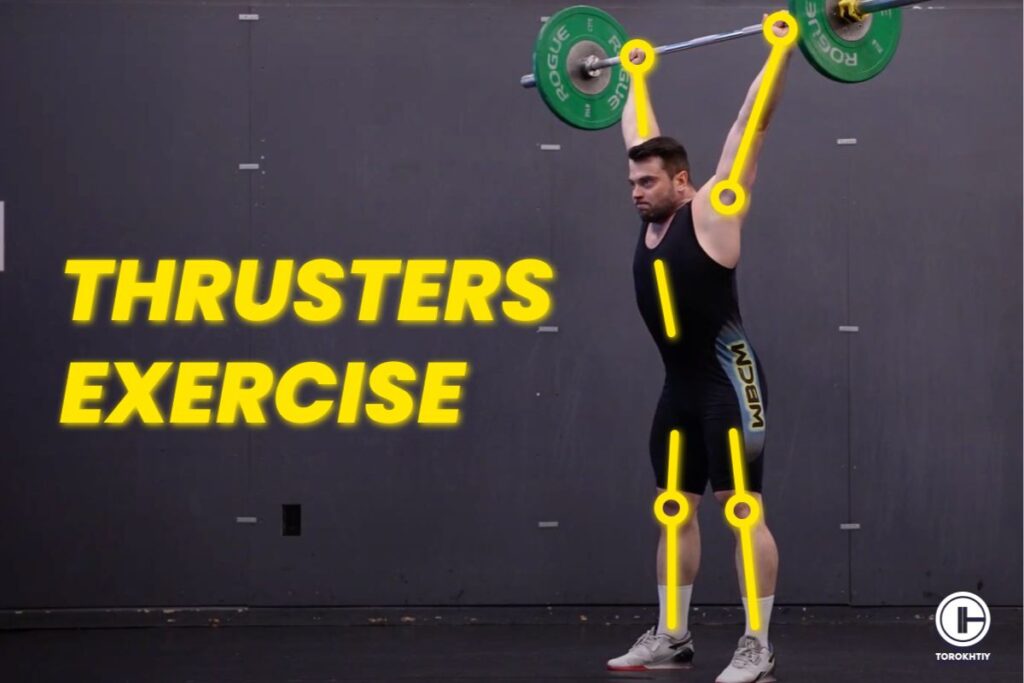
What Is the Thrusters Exercise?
As we previously mentioned, thrusters exercise is a dynamic, multi-joint, full-body exercise that combines a front squat with an overhead press. Multi-joint resistance exercises are excellent because they increase the thickness of your muscles a bit more than single-joint exercises do.
Thrusters mostly target your lower body, including the quads, hamstrings, and glutes, but it also engages your core and shoulders, chest… Basically, your entire body has to do some serious work to make them happen.
Their main purpose is to build strength and muscular endurance and they do that by working multiple muscle groups at the same time.
Whether you use a barbell (which is what we’ll be focusing on), dumbbells or kettlebells, thrusters are a challenging, but excellent exercise.
How to Do the Thrusters?
Let’s see how to do thrusters!
1. Setup
Load the barbell with an appropriate weight and place the barbell on a rack, at about shoulder height. Stand with your feet shoulder-width apart and grip the barbell with your hands a little wider than shoulder-width apart, with palms facing forward.
Or … you can clean the bar from the floor.
Place the barbell on the front of your shoulders. Keep your elbows up and pointed around 4 o’clock.
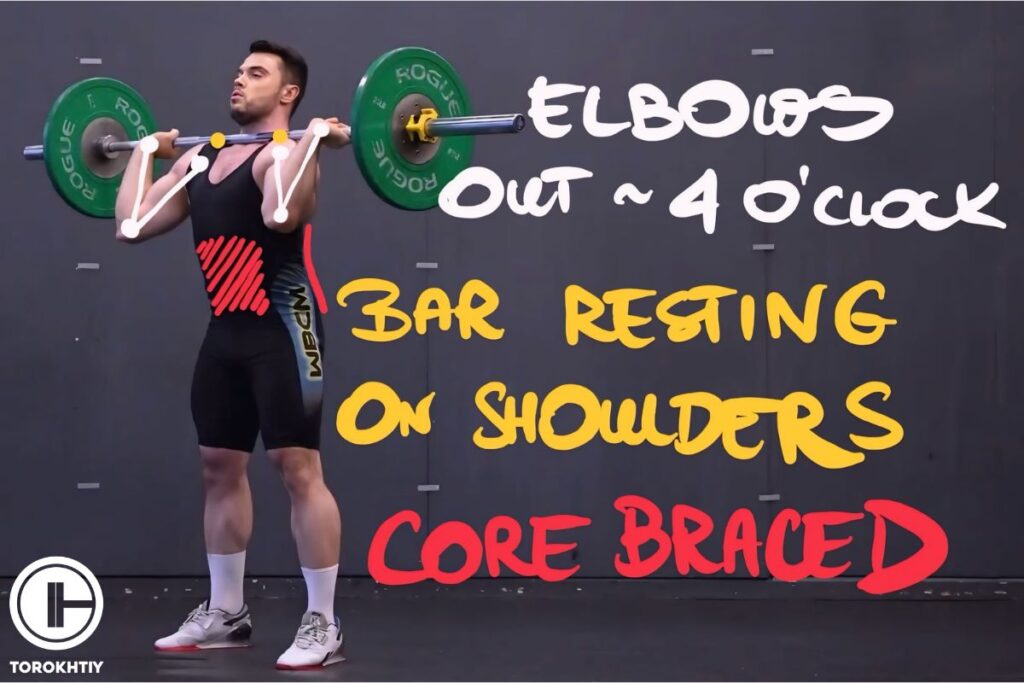
2. Front Squat
Engage your core to stabilize your spine and protect the lower back. Push your hips back just a bit, bend your knees and squat. Lower your body as if you are sitting into a chair and keep lowering until your thighs are at least parallel to the ground.
Your knees should travel over your toes – don’t worry there is absolutely nothing wrong with that. Keep your chest up and back straight.
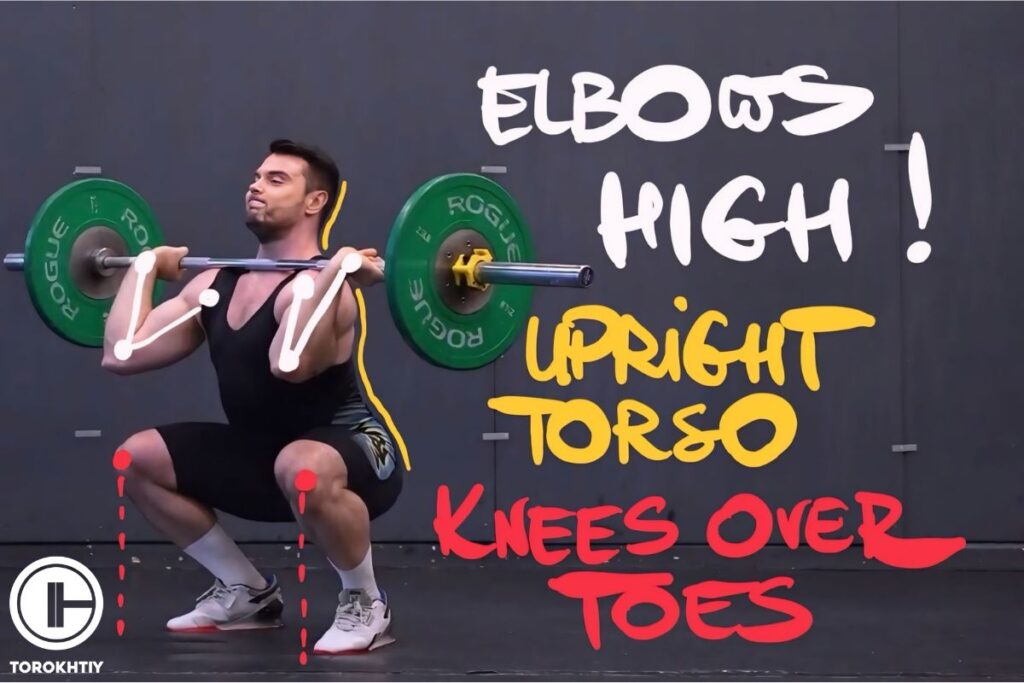
3. Transition to the Press
Once you’re at the bottom of the squat, get ready to stand up and combine it with the press. Push through your whole foot to quickly stand up and extend your hips and legs completely. This explosive motion gives you the momentum you need for the overhead press.
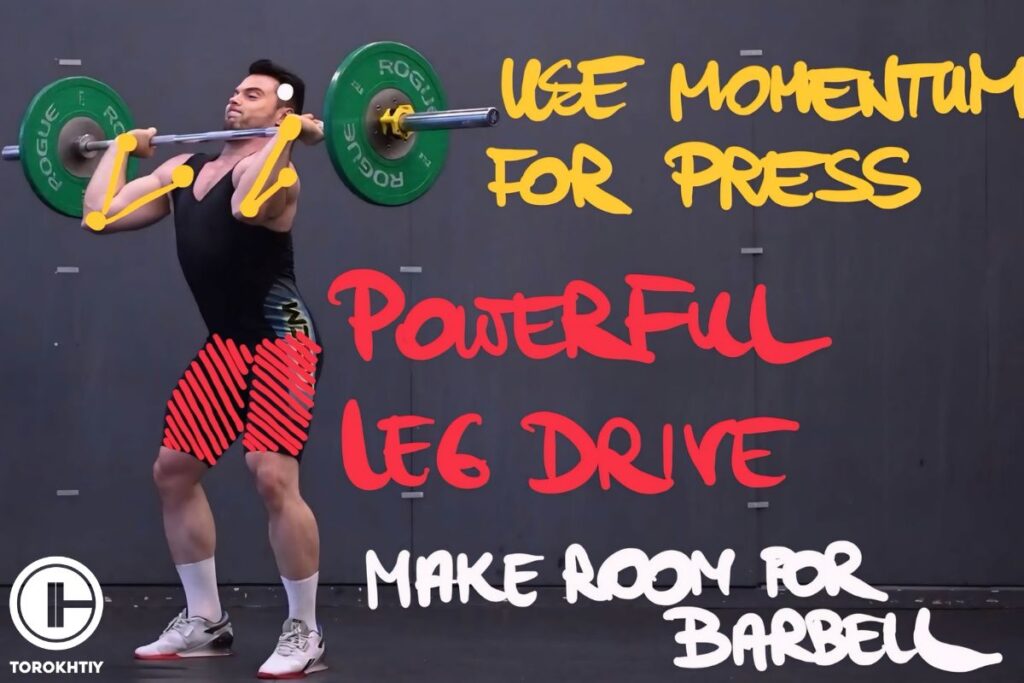
4. Press
As you stand up straight, press the barbell overhead. This motion should be smooth. Use the momentum from your legs to help lift the bar. Extend your arms fully, so that the bar ends up directly over your head. Your biceps should be close to your ears.
Don’t forget to engage your core. If you don’t, you risk arching your back and losing balance.
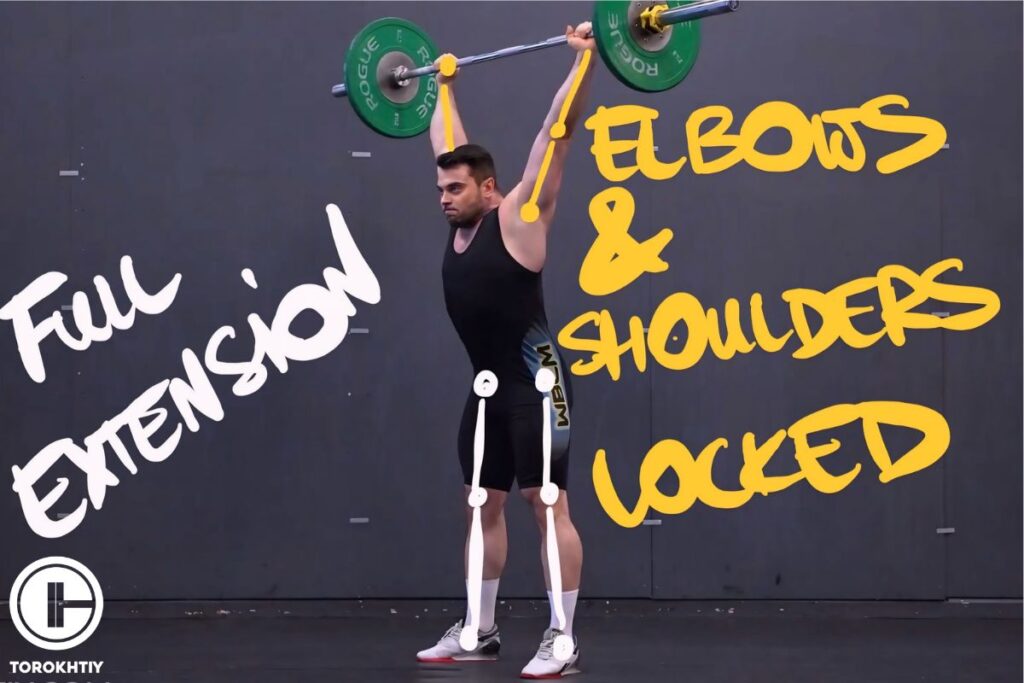
5. Return to Start
Almost done!
Lower the bar back to shoulder level in a controlled way. Don’t drop it quickly – keep everything smooth to avoid getting injured. Once the bar is back at shoulder level, you’re ready to go again.
Well, what do you know! You just did a thruster!
Save it for easy access!
Bookmark this page now to access the program and instructional videos anytime, anywhere.
Stop wasting time searching during your gym sessions.
How to Program Thrusters?
| Level | Reps | Sets | Frequency |
|---|---|---|---|
| Beginner | 3-5 | 5-10 | 1-3 times per week |
| Intermediate | 6-10 | 3-5 | 1-2 times a week |
| Advanced | 3-5 | 3-5 | Include thrusters into your HIIT |
Beginner
- Do 5-10 sets of 3-5 reps per set to keep accuracy and great technique
- Do thrusters 1-3 times a week
- Start with a super light weight, an empty barbell, or even just a PVC pipe to master the form. Don’t rush – correct form prevents injuries so it’s incredibly important to take the time to fully learn it. Once you get the form down, you can increase the weight by 5 to 10 pounds. Also, do mobility exercises to improve squat depth and shoulder mobility
Intermediate
- Do 3-5 sets of 6-10 reps per set
- Do thrusters 1-2 times a week
- Start increasing the weight in 5 to 10-pound increments, but don’t use anything so heavy that it messes up your form. Combine thrusters with other compound movements like deadlifts or pull-ups for a balanced routine. Use a variety of rep ranges to challenge different muscle fibers. Improve your thruster strength to later be able to use thrusters in your WOD.
Advanced
- Do 3-5 sets of 3-5 reps per set for strength or start using them in your WODs. Challenge your technique quality under fatigue.
- Use heavier weights to stimulate strength, include thrusters into your HIIT and make your sessions more intense by reducing rest time between sets. Add variations like single-arm thrusters to challenge stability and coordination even more.
Follow us!

Free!
Get a 2-week Weightlifting Program as a bonus for the subscription to kickstart your training plan!

Free!
5 Common Thrusters Mistakes
You shouldn’t be afraid of making mistakes. After all, that’s how we learn. But if you keep repeating them, then something is off. One way of preventing you from repeating the same mistakes over and over is to get familiar with what they are and how to handle them.
Let’s see some of the most frequent mistakes and, if you happen to make any, how you can correct them.
❌ Not Squatting Deep Enough
A shallow squat is something every beginner will make at least a few times. It’s not the end of the world, but you won’t get the strength gains you could, or all the other benefits of the workout.
Make sure to squat until your thighs are at least parallel to the floor to fully engage your legs and glutes.
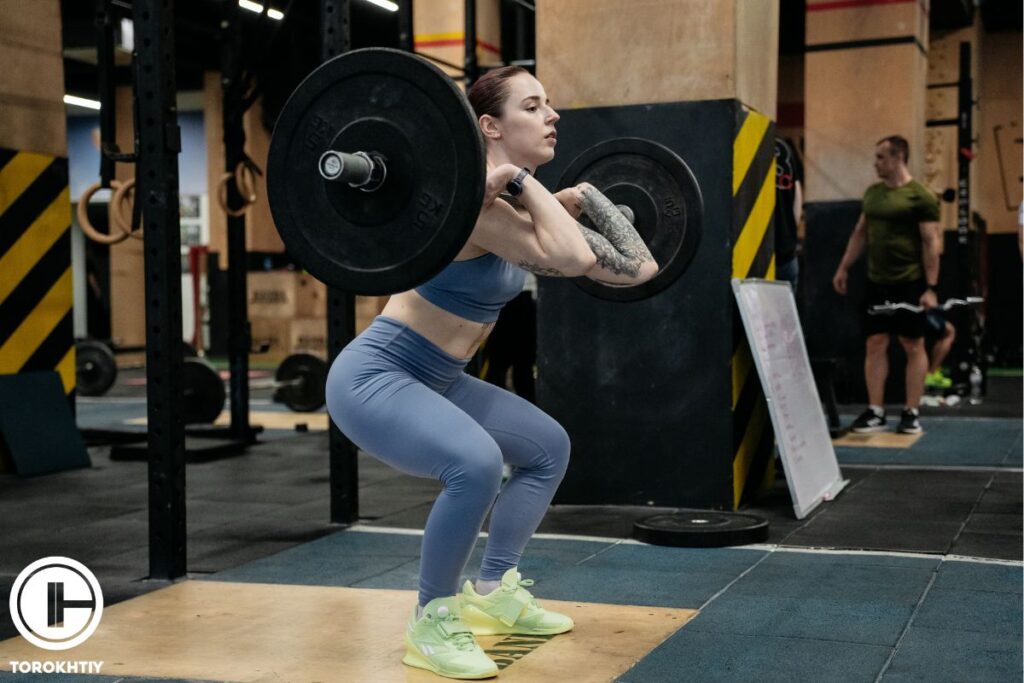
❌ Rounding Your Back
If you let your back round during the squat phase, you can get injured. Always keep your chest up and your core engaged so that your spine stays neutral. Focus on correct form and don’t lift weights that are too heavy for you.
The great way to work on that is to make pauses in some critical positions, like for example the bottom of the squat. Stay there, take a few breaths and own the position. Even if you’re actually able to lift the weights, if they mess up your form – they’re too heavy for you.
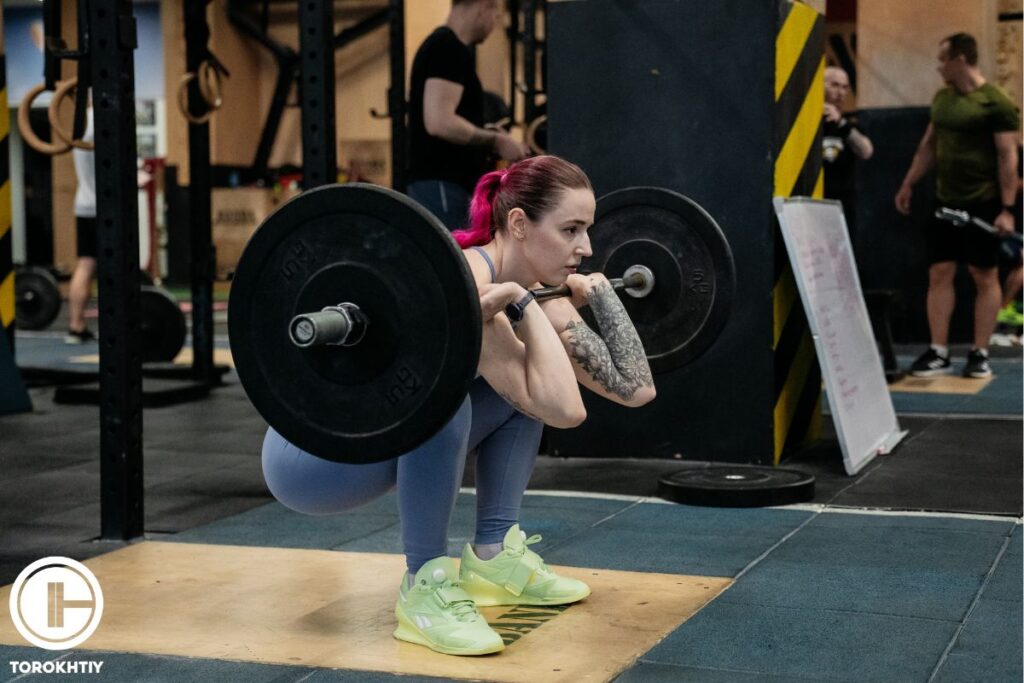
❌ Elbows Dropping
When you drop your elbows during the squat, the barbell will slide forward and throw off your balance. Being off balance is never pleasant but when you’re working with weights… Phew! That’s downright dangerous.
Keep your elbows pointed forward and slightly up to support the barbell properly and maintain control throughout the exercise.
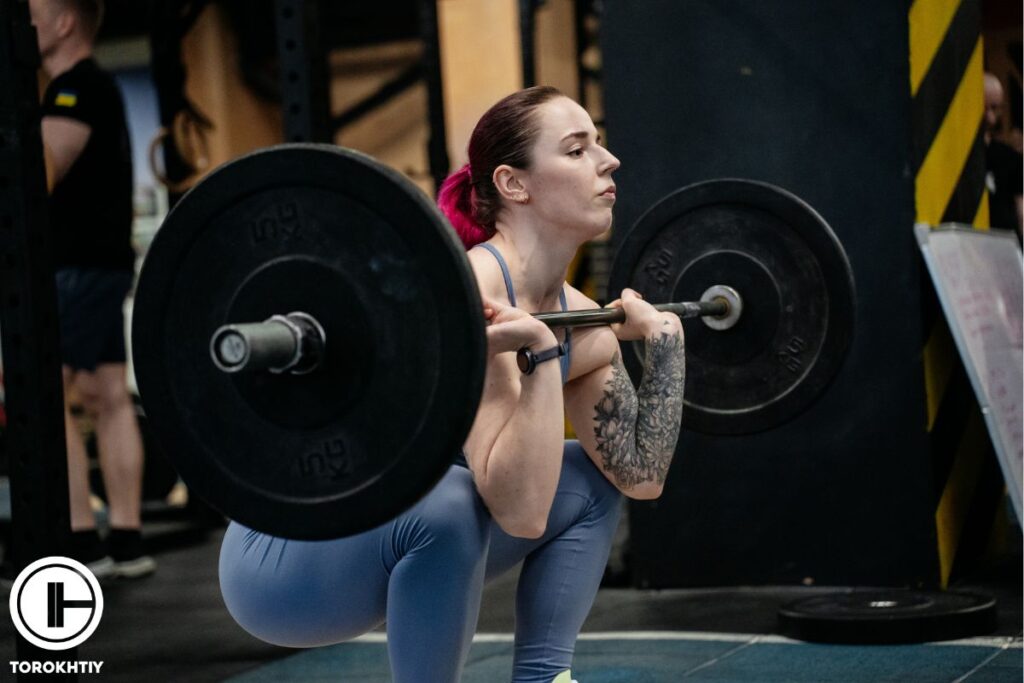
❌ Using Arms Only for the Press
Remember that thrusters are a full-body exercise, and the power for the press should come from your legs and hips, not arms only.
Use the momentum from standing up out of the squat to help drive the bar up. This makes the whole movement more efficient and powerful.
❌ Not Engaging the Core
If you don’t engage your core, you’ll throw off your balance and you’ll be at higher risk of injury, especially to your lower back.
Tighten your abs during the exercise to stabilize your spine and keep your form in check.
5 Benefits of Thrusters
With barbell thrusters being relatively challenging, you might wonder why even bother with them. The answer is – the benefits, of course! There are many benefits of thrusters, but we’ll go over the ones that are the most significant.
✅ Full-Body Workout
Thrusters work many major muscle groups at once, and this includes your legs, core, shoulders, and arms. This makes them super efficient for building overall strength and endurance if done correctly.
✅ Versatility
Thrusters are versatile and, depending on how you use them, you can do different things and get different results. You can use them as part of your strength training regimen, or you can use them as part of your HIIT program to improve your overall fitness.
They may also get your heart rate up, and that can give a nice boost to your cardiovascular fitness, if you will include that in a specific WOD.
✅ Improved Coordination & Balance
Thrusters need a lot of coordination and balance if you want to do them correctly. If you do them on a regular basis, both of these skills will improve, and you probably already know how important they are for fitness and daily activities.
Tips From the Champ
Thrusters are a real total body test of your grit. I always tell my athletes to find a rhythm and optimal pace. You must connect all drill phases: front squat, push press and all reverse sequences and feel it as one. Also, breathe through the movement and don’t let the bar stop. The more fluid you are, the less it’ll feel like a grind.
Olympic Weightlifting Champion
✅ Stronger Bones
Thrusters are a weight-bearing exercise and they promote bone density, keeping your bones strong and healthy. This is very important for preventing osteoporosis, especially as you age.
✅ Supports Joint Health
You need a full range of motion for thrusters and that will keep your joints flexible and strong. Doing exercises like thrusters will improve the health of your joints and may reduce the risk of issues related to them, like arthritis.
3 Thrusters Variations
We highly doubt you’ll get bored of thrusters workout but on the off chance that you do, here are some variations for you to try out.
1. Thrusters with Different Stances
Vary your foot position to target different muscle groups. For example, use a narrow stance to focus on your quads or a wider stance to engage your glutes and inner thighs more.
2. Paused Thrusters
Do a pause at the bottom of the squat and/or at the top of the press. This may help build strength and stability in those positions. It’s also great for improving control and technique.
3. Behind the Neck Thruster
You rest a barbell on your upper traps and do a normal thruster. This variation targets your shoulders and triceps and it can help improve shoulder mobility and overhead strength.
4 Thrusters Alternatives
Just in case you simply can’t get enough of thrusters-like exercises, we also have some alternatives. They’ll engage similar muscles and the benefits you’ll get are very alike. Plus, they can keep your training routine fresh and exciting because, as we all know, even the most exciting routine feels stale and blah if you don’t switch it up from time to time.
Let’s get into some of the best alternatives to thrusters!
1. Push Press
The push press focuses more on your upper body than the thruster but it still involves your legs. Start with the barbell at your shoulders, dip your hips and knees a little, and then press the bar overhead using the power from your legs to help lift.
2. Overhead Squat
Hold a barbell overhead while squatting. It’s an excellent exercise for building shoulder stability, core strength, and lower body strength. The overhead position challenges your balance and mobility, so you get a comprehensive workout out of the overhead squat.
3. Kettlebell Thrusters
If you’re an Olympic lifter, this is a good exercise because studies have shown that it can increase maximal power in the clean and jerk and other Olympic-style exercises.
Hold a kettlebell in each hand at shoulder height and do thrusters like you normally would.
I personally think there is a lower entry point to that exercise as it requires less shoulder mobility than a thruster with a bar, so if you would like to do thrusters but never did them or have problems with front squat – this is a great tool.
4. Sandbag Thrusters
Instead of the barbell, use a sandbag and do thrusters like you normally would. The shifting weight of the sandbag adds an extra challenge to your stabilizing muscles.
Who Should Do the Thrusters?
1. Athletes
Thrusters are excellent for athletes because they build explosive power, strength, and even endurance when done for that purpose. Since they’re a full-body exercise, thrusters will help improve performance in sports that rely on quick, powerful movements.
There are plenty of sports that require more than just leg power in one movement and need press as well in a single motion.
2. Weightlifters
For those focused on lifting, thrusters are a great compound exercise that improves both the squat and the overhead press. They help develop overall strength, coordination,and stability.
3. People With Limited Training Time (Under 1 Hour)
Thrusters can do a lot in a short amount of time, so if you don’t feel like having a long workout, then do some thrusters! They target many muscle groups at the same time and they’re a comprehensive workout. You can plan a very effective and short workout plan that will target both strength and some anaerobic conditioning and thrusters can be used for both.
Muscles Worked by the Thrusters
What muscles do thrusters work? In short – many of them!
When you squat down, your quads, hamstrings, and glutes do most of the work. As you stand up and press the bar overhead, your shoulders, triceps, and upper chest kick in. And let’s not forget that your core is constantly engaged to keep you stable and balanced.
This is why thrusters are so effective – they hit both your lower and upper body and give your entire body a workout.
Conclusion
If you give them a chance, thrusters could be a game-changer for your fitness routine. They’re a powerful exercise that engages multiple muscle groups at once and they come with a bunch of benefits.
Just remember to start with lighter weights, learn the form, and then you can increase the load.
Have you tried thrusters? How did you like them? What’s your go-to variation or alternative?
We’d love to hear from you so leave a comment below the article!
References:
- Emily Cronkleton “Step-by-Step Guide to Thrusters and Why You Want to Do Them,” Healthline, https://www.healthline.com/health/fitness-exercise/thrusters (accesed August 9th, 2024)
- Health Promotion Board (HPB) “Prevent Injuries with Proper Form During Workouts,” Singapore University Health Center, https://www.nus.edu.sg/uhc/articles/details/prevent-injuries-with-proper-form-during-workouts (accessed July 31st, 2024)
- Keith M. Channon, “Exercise and cardiovascular health: new routes to reap more rewards,” Cardiovascular Research 116, no. 5 (2020): e56–e58.
- Paulo Gentil, Saulo Soares, Martim Bottaro, “Single vs. Multi-Joint Resistance Exercises: Effects on Muscle Strength and Hypertrophy,” Asian Journal of Sports Medicine 6, no. 2 (2015): e24057.
- Ronald Snarr, “Exercise Technique: Kettlebell Thruster,” Strength & Conditioning Journal 36, no. 4 (2014): 73-76.
- Photos by Torokhtiy Media Team.
Why Trust Us?
With over 20 years in Olympic weightlifting, strength training, nutrition coaching, and general fitness our team does its best to provide the audience with ultimate support and meet the needs and requirements of advanced athletes and professional lifters, as well as people who strive to open new opportunities and develop their physical capabilities with us.
By trusting the recommendations of our certified experts in coaching, nutrition, and sports training programming, as well as scientific consultants, and physiotherapists, we provide you with thorough, well-considered, and scientifically proven content. All the information given in the articles concerning workout programming, separate exercises, and athletic performance, in general, is based on verified data.
The product testing process is described in more detail here.
Author: Oleksiy Torokhtiy
Olympic Weightlifting Champion
Best Results: Snatch – 200 kg,
C&J – 240 kg
Oleksiy Torokhtiy is a professional athlete boasting 20 years of experience in Olympic weightlifting. With multiple European and World titles under his belt, he has showcased his prowess in two Olympic Games (Beijing 2008 and London 2012). Upon concluding his illustrious career, Oleksiy dedicated himself to coaching. By 2022, he had conducted over 200 weightlifting seminars worldwide. He is the visionary behind an international sportswear and accessories brand known for its motto, “Warm Body Cold Mind.” Additionally, he is an esteemed author and the creator of a series of training programs and eBooks.




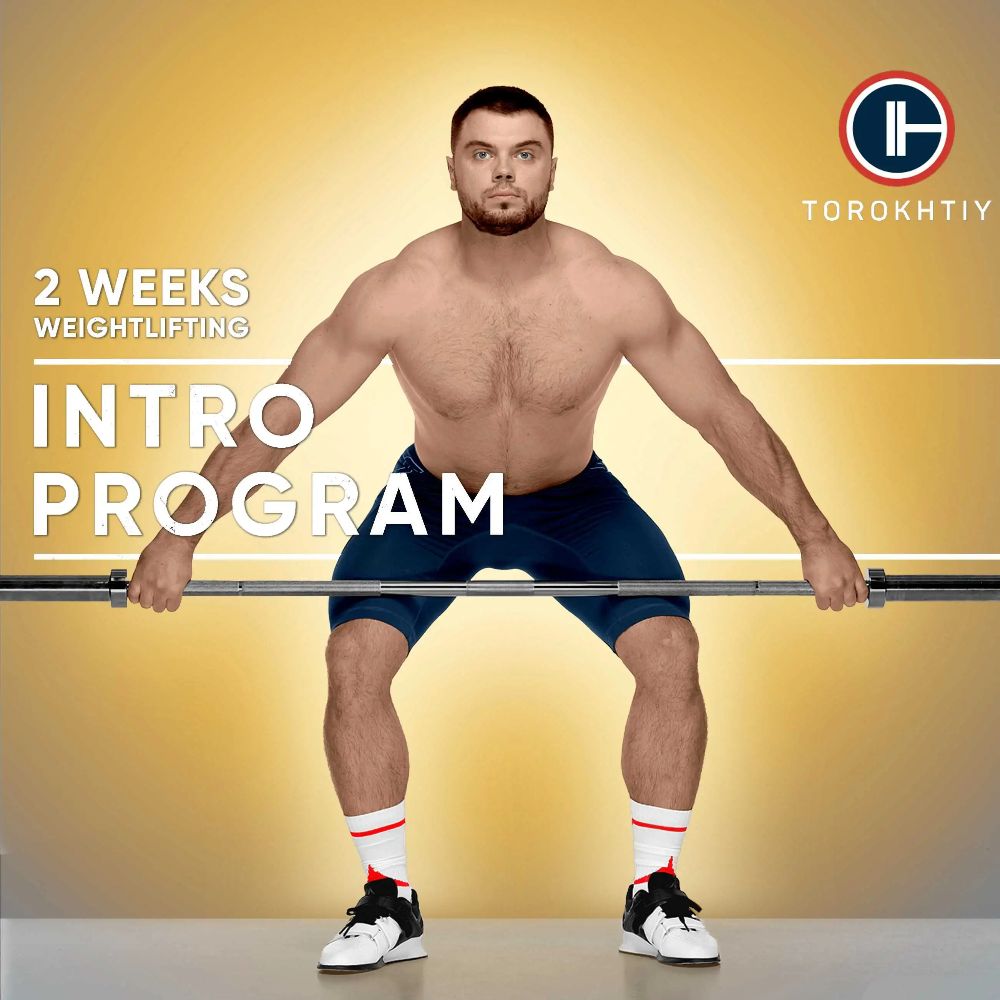
Still have questions after reading our article? Unlock your full potential by engaging with our experts and community! Don’t hesitate — leave a comment below and Oleksiy Torokhtiy will provide a personalized answer and insights to help you reach your goals.